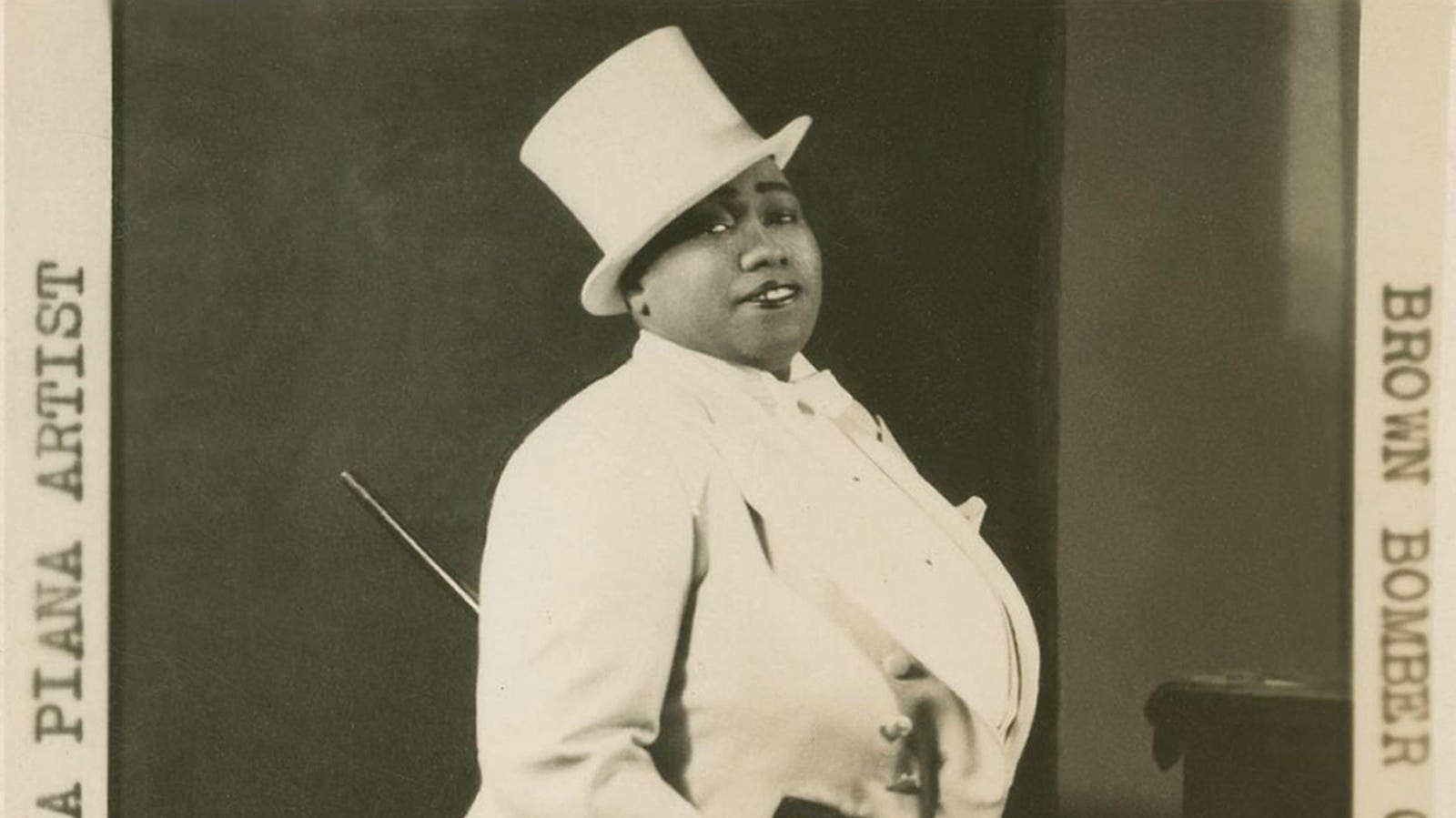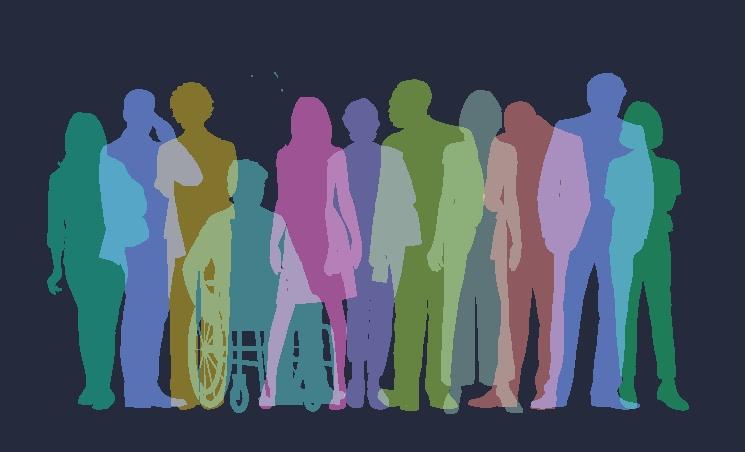Diversity and Inclusion (DEIA)
The Power of Employee Ambassadors: How to Leverage Employee Advocates to Promote Accessibility in the Workplace

Introduction
Accessibility in the workplace is a crucial aspect of creating a positive and inclusive work environment. In today’s diverse workforce, it’s essential to ensure that all employees feel valued, respected, and able to contribute their skills and talents without any barriers.
Employee ambassadors play a vital role in promoting accessibility in the workplace. These ambassadors are employees who are passionate about creating a more inclusive environment and are willing to lend their voices to promote awareness and understanding. By leveraging employee ambassadors, organizations can create a culture of acceptance, promote diversity, and drive business results.
The Importance of Accessibility in the Workplace
Accessibility in the workplace is not just a legal requirement, but it’s also a way to demonstrate a commitment to creating a positive and inclusive work environment. When employees feel valued and respected, they are more likely to be productive, engaged, and loyal to the organization.
Accessibility in the workplace can take many forms, including:
- Physical accessibility, such as providing wheelchair ramps and elevators
- Vision and hearing impairments, such as closed captioning and audio descriptions
- Language accessibility, such as providing multilingual support and materials
- Accessible technology, such as screen readers and Braille displays
Why Employee Ambassadors are Essential
Employee ambassadors are essential for promoting accessibility in the workplace because they can provide a unique perspective and insight into the challenges and barriers that people with disabilities face.
Employee ambassadors can also help to:
- Provide training and education on disability awareness and accessibility
- Advocate for accessibility changes and improvements
- Share their experiences and perspectives with colleagues
- Help to create a more inclusive and accepting work environment
How to Leverage Employee Ambassadors
To leverage employee ambassadors, organizations should:
- Identify and recruit employee ambassadors who are passionate about accessibility and willing to speak up
- Provide training and education on disability awareness and accessibility
- Empower employee ambassadors to share their experiences and perspectives with colleagues
- Encourage employee ambassadors to provide feedback and suggestions for improving accessibility
- Recognize and reward employee ambassadors for their contributions
Benefits of Leverage Employee Ambassadors
By leveraging employee ambassadors, organizations can experience numerous benefits, including:
- Increased employee engagement and retention
- Improved diversity and inclusion
- Enhanced brand reputation and customer loyalty
- Increased productivity and efficiency
- Reduced turnover and recruitment costs
Conclusion
In conclusion, employee ambassadors play a vital role in promoting accessibility in the workplace. By leveraging their voices and perspectives, organizations can create a culture of acceptance, promote diversity, and drive business results. By implementing the strategies outlined in this article, organizations can ensure that their workplaces are inclusive, accessible, and productive for all employees.
FAQs
What is the role of employee ambassadors in promoting accessibility?
Employee ambassadors play a crucial role in promoting accessibility by sharing their experiences and perspectives, providing training and education, and advocating for accessibility changes.
How can organizations identify and recruit employee ambassadors?
Organizations can identify and recruit employee ambassadors by looking for employees who are passionate about accessibility and willing to speak up. They can also conduct surveys and focus groups to identify employees with disabilities and reach out to them to participate in the ambassador program.
What are some common challenges faced by employee ambassadors?
Some common challenges faced by employee ambassadors include lack of support, lack of resources, and lack of understanding from colleagues and management.
How can organizations support employee ambassadors?
Organizations can support employee ambassadors by providing training and education, empowering them to share their experiences and perspectives, and recognizing and rewarding their contributions.
What are some benefits of having employee ambassadors?
Benefits of having employee ambassadors include increased employee engagement and retention, improved diversity and inclusion, enhanced brand reputation, and increased productivity and efficiency.
Diversity and Inclusion (DEIA)
The Forgotten Black Lesbian Dandies

Introduction to Black Dandyism
The 2025 Met Gala theme, “Superfine: Tailoring Black Style,” celebrates the essence of Black dandyism, taking inspiration from style trailblazers like André Leon Talley, Dapper Dan, Langston Hughes, and James Baldwin. In tandem with the Costume Institute’s exhibition, the theme pays homage to the art of fine tailoring and the enduring style of Black men—from the 18th century through the Harlem Renaissance of the Roaring Twenties to present day. While the Met Gala primarily highlights this tradition through a lens of masculinity, it’s essential to recognize the often-overlooked contributions of women, particularly masculine-presenting lesbians, who were also pioneers of this style.
The Emergence of Female Dandies in the 1920s
During the 1920s, as jazz and blues dominated mainstream entertainment and echoed through every speakeasy from 110th Street to 155th in New York, a small group of women began embracing masculine attire—not just on stage, but in their everyday lives. Black queer artists and intellectuals played a pivotal role in shaping this style of dandyism. Like many queer people in early 20th-century America, they often had to hide their sexualities and gender identities. However, for masculine-presenting lesbians, their performance of masculinity—viewed as a kind of spectacle, much like modern-day drag—allowed for a degree of visibility and acceptance. By defying traditional notions of “masculine” and “feminine” dress and behavior, they carved out space for themselves.
Gladys Bentley: A Pioneer of Masculine Lesbianism
At famed speakeasies the Clam House and the Ubangi Club, Gladys Bentley became a prominent figure behind the piano and in front of it. Clad in a white three-piece suit with a trailing coat, a towering top hat, and a cane, the openly lesbian performer captivated audiences with bawdy, jazz-infused sets that included suggestive lyrics about her female lovers. She openly flirted with women in the crowd, embodying a suave, masculine persona that both defied and redefined gender expectations of the era. Bentley’s performances were more than entertainment—they were radical acts of visibility of masculine lesbianism at a time when few had ever witnessed such.
Stormé DeLarverie: The Guardian Angel of the Village
Fifteen blocks north at the Apollo Theater—and three decades later—emerged Stormé DeLarverie: performer, activist, and self-proclaimed “guardian angel of the Village.” A towering figure in both presence and queer legacy, DeLarverie is widely believed to have thrown the first punch at the Stonewall uprising, a claim supported by those closest to her. Stormé DeLarverie, born to an African American mother and a white father, was the only “male impersonator” in the Jewel Box Revue, a queer touring company during the 1950s and ’60s. While the other performers dressed in glittering dresses, DeLarverie stood out—famously photographed in a shawl-collar tuxedo. In another photograph, she appears in a wide-cut zoot suit and fedora, a pipe in hand, fully embodying the Black masculine style standard of that time.
The Legacy of Female Dandies
While Black dandyism is often narrated through the lens of male fashion icons, female and queer dandies have been undeniably present—though historically rendered invisible. Despite this erasure, their influence resonates deeply, not only within the Black queer community but also in contemporary fashion and culture, as seen in figures like Janelle Monáe, Lena Waithe, and others who continue to carry their legacy.
Conclusion
The story of Black dandyism is complex and multifaceted, encompassing not just the styles of Black men but also the pioneering efforts of masculine-presenting lesbians like Gladys Bentley and Stormé DeLarverie. Their contributions to the tradition of Black dandyism are a testament to the power of self-expression and the enduring impact of queer culture on fashion and society.
FAQs
- Q: What is the 2025 Met Gala theme?
A: The 2025 Met Gala theme is “Superfine: Tailoring Black Style,” celebrating the essence of Black dandyism. - Q: Who are some notable figures in the history of Black dandyism?
A: Notable figures include André Leon Talley, Dapper Dan, Langston Hughes, James Baldwin, Gladys Bentley, and Stormé DeLarverie. - Q: What role did masculine-presenting lesbians play in the development of Black dandyism?
A: Masculine-presenting lesbians, such as Gladys Bentley and Stormé DeLarverie, were pioneers in embracing masculine attire and performance, contributing to the visibility and acceptance of queer identities. - Q: How has the legacy of female dandies influenced contemporary fashion and culture?
A: The influence of female dandies can be seen in contemporary figures like Janelle Monáe and Lena Waithe, who continue to embody and evolve the traditions of Black dandyism and queer style.
Diversity and Inclusion (DEIA)
Target CEO’s Attempt To Boost Staff Morale Backfires

Facing a decline in customer goodwill and the measurable effects of a DEI-inspired boycott, Target CEO Brian Cornell broke his silence in an all-employee memo, which may have done more harm than good in quelling anxiety among Target staff, according to the Minnesota Star Tribune.
Key Facts
Acknowledging that Target has suffered a “tough few months” and that he and his leadership team have been noticeably absent in their silence, Cornell committed to share more with employees to reinforce the company’s values going forward.
He reiterated the company’s commitment to “inclusivity, connection, drive” as core values, even as Black faith leaders called for a customer boycott after Target rolled back its DEI initiatives earlier this year.
Since the end of January, immediately after Target announced its revised DEI policies, Target experienced 11 consecutive weeks of decreased foot traffic, with a slight uptick during April Holy Week, though April foot traffic ended off 3.3%, according to Placer.ai.
Also missing from Cornell’s message were any concrete steps that he and the leadership team will take to reverse course.
Key Background
Target created confusion among employees and customers after announcing in January that the company had concluded its diversity, equity and inclusion goals, ended reporting to outside diversity-focused surveys, such as HRC’s Corporate Equality Index and “evolved” its supplier diversity program that had supported minority-owned businesses. This followed a controversy surrounding Target’s Pride Month 2024 activities. Last June, the company rolled back its Pride Month selections and displays after experiencing a backlash the year before from some customers who felt the company’s merchandise choices were inappropriate. Yet the roll back in Pride Month 2024 left other customers feeling Target was abandoning support of the LGBTQ community.
No Longer Considered A Champion Of Diversity
Target previously has been considered a retail champion for diverse communities, but over the past year, it has lost much of that goodwill. Katya Skogen, the director of cultural insights at research firm Collage, reports that consumer trust in Target has dropped by four percentage points in the last six months to 78% with the steepest declines among Black and Hispanic consumers. In addition, there has been a nine-point drop in perceived relevance of the Target brand among Black Americans. “This marks a serious fracture in the emotional connection that has long been one of the brand’s greatest strengths,” Skogen shared. “At a time when trust in brands is already fragile, and consumers cautiously navigate economic uncertainty, Target is under mounting pressure to restore the credibility that once set it apart.”
Criticism Mounting
Retail consultant Carol Spieckerman said Cornell’s memo drew attention to the “communication vacuum without explaining it.” She added that in the email, Cornell acknowledged but didn’t take responsibility for the concerns and controversies surrounding the company. “The tone implies that things are happening around and to Target that are out of its control,” she continued. GlobalData’s Neil Saunders got much the same impression. He shared the memo, which appeared jumbled, lacked substance and was poorly crafted, “highlights the disconnect that has opened up between management and the shop floor.” He added, “No where does it spell out how problems will be remedied.”
Crucial Quote
“Many of Target’s issues are self-inflicted. The business seems to be in a weird state of inertia and denial. What’s strange is that Target isn’t a terrible business, it has many advantages and a lot of talent in its ranks, it just doesn’t seem to be able to marshal them properly. Leadership really needs to start connecting better with staff at all levels. At the moment it’s not so much leading as drifting,” GlobalData’s Saunders shared.
Tangent
Target is facing mounting troubles at checkout with self-checkout being limited in some stores and a previously established limit of ten items for self-checkout being enforced. Despite Target statements that self-checkout is offered in most stores and will remain, TheStreet’s Cody Kline reports that Target customers increasingly feel frustrated by “blocked machines, roped-off lanes, long lines and stressed-out cashiers.” Kline observed that the Target customer experience at checkout is getting worse, not better. “When perception doesn’t match the brand promise, trust erodes — quietly, but quickly,” she warned.
Conclusion
The crisis at Target is multifaceted, involving a decline in customer goodwill, decreased foot traffic, and a loss of trust among diverse communities. The company’s decision to roll back its DEI initiatives and the subsequent boycott have had significant consequences. To restore its credibility and reputation, Target must take concrete steps to address the concerns of its employees, customers, and stakeholders. This includes providing a clear plan to reverse the damage, taking responsibility for the company’s actions, and demonstrating a commitment to diversity, equity, and inclusion.
FAQs
Q: What is the current state of Target’s customer goodwill?
A: Target is facing a decline in customer goodwill due to its decision to roll back its DEI initiatives and the subsequent boycott.
Q: What are the consequences of Target’s decision to roll back its DEI initiatives?
A: The consequences include a decline in foot traffic, a loss of trust among diverse communities, and a decrease in consumer trust.
Q: What can Target do to restore its credibility and reputation?
A: Target must take concrete steps to address the concerns of its employees, customers, and stakeholders, including providing a clear plan to reverse the damage, taking responsibility for the company’s actions, and demonstrating a commitment to diversity, equity, and inclusion.
Q: How has the boycott affected Target’s sales?
A: The boycott has resulted in 11 consecutive weeks of decreased foot traffic, with a slight uptick during April Holy Week, though April foot traffic ended off 3.3%.
Q: What is the current state of Target’s self-checkout system?
A: Target is facing mounting troubles at checkout with self-checkout being limited in some stores and a previously established limit of ten items for self-checkout being enforced.
Diversity and Inclusion (DEIA)
The Silence After the Spotlight: What Happened to Health Equity?

The last five years ushered in a wave of performative urgency across the healthcare industry — a tidal surge of press releases, C-suite appointments and purpose-driven campaigns declaring a new era of commitment to diversity, equity and inclusion. For many who have spent their careers in the trenches of health disparities work, it felt like a long-awaited reckoning — a rare window to push real, systemic change.
The Reality of Health Equity Efforts
But now, with the political winds shifting and legal uncertainties clouding the DEI landscape, many of the loudest voices have gone eerily quiet. Initiatives are quietly being sunset. Equity teams are being dissolved. Former champions have disappeared from panels and podiums. What once appeared to be a movement now feels more like a marketing cycle that expired.
Was Health Equity Just a Fad?
It’s fair to ask: was health equity just the latest healthcare “hustle”? Another badge for visibility? A convenient way to be on trend? Many of the early warning signs were there: initiatives announced without infrastructure, funding that never materialized and leadership roles created without authority or resources. DEI professionals were invited into rooms — but too often not given a voice. They were handed lofty titles, yet asked to color inside predetermined lines. Meanwhile, their organizations basked in applause for appearances, not results.
What Happened to Health Equity?
What happened? The generous interpretation is that legal and political pressures forced a change in strategy. But even that framing lets too many leaders off the hook. Because you can alter rhetoric without abandoning values. You can evolve your messaging without walking away from your mission. The truth is more uncomfortable: some organizations weren’t ever serious about this work to begin with. They were renting values, not owning them.
The Impact on Health Equity Leaders
Let’s not sugarcoat this moment. Many health equity leaders feel betrayed. They feel used. And they’re right to feel that way. Because what’s at stake isn’t just credibility — it’s people’s lives. Vulnerable communities that experience the harshest disparities in health outcomes don’t have the luxury of waiting for politics to stabilize or organizational priorities to realign. So, where do we go from here?
Moving Forward
1. Stay the Course—Even If the Spotlight Is Gone
Now is not the time to back down. In fact, real leaders will show themselves in what they do now, when the noise has died down and the easy accolades are gone. Organizations that meant what they said should continue to drive toward health equity goals however they are described — if necessary, under new language or frameworks. Call it quality. Call it population health. Call it patient-centeredness. But don’t stop doing the work just because the branding changed. Leadership is not about doing what’s popular — it’s about doing what’s right, even when it’s uncomfortable.
2. Demand Accountability—for Past Commitments and Present Silence
We cannot normalize the kind of strategic amnesia now unfolding across healthcare. When organizations made bold pronouncements in 2020, they weren’t just symbolic gestures — they were public commitments. And commitments matter. It’s time to ask the uncomfortable questions: What happened to your health equity agenda? Why are your equity leaders gone? Where did the funding go?
3. Integrate Equity into the Broader Healthcare Fix
The biggest opportunity we’ve missed is also our most urgent one: integrating the health equity conversation into broader healthcare reform. The same systemic issues — misaligned incentives, fragmented care, access barriers, clinician burnout — that fail everyone fail the most vulnerable people first and worst. Equity isn’t a separate issue. It’s the canary in the coal mine. Fixing equity and fixing healthcare are not competing goals — they are convergent ones. If we design a system that works for the most complex, marginalized patients, we design a system that is better for everyone.
Conclusion
So, yes, some of what we saw over the past few years was performative. Some of it was opportunistic. Some of it was a hustle. But it wasn’t for everyone, and we can’t afford to let our cynicism dictate the future. Because while some leaders may be done with health equity, health equity isn’t done with us. The disparities are still there. The patients are still suffering. The trust is still broken. And our obligation remains — especially if we want to call ourselves a just and compassionate healthcare system. Real leadership in this moment isn’t loud. It’s consistent. It’s not in the spotlight. It’s in the follow-through. And it doesn’t waver when the applause and recognition stops.
FAQs
- Q: What is health equity?
- A: Health equity refers to the principle of ensuring that all individuals have an equal opportunity to achieve optimal health, regardless of their background, socioeconomic status, or demographic characteristics.
- Q: Why did health equity initiatives seem to fade away?
- A: Health equity initiatives appeared to fade away due to a combination of factors, including shifting political winds, legal uncertainties, and a lack of genuine commitment from some organizations.
- Q: How can we move forward with health equity efforts?
- A: Moving forward requires staying committed to health equity goals, demanding accountability from organizations, and integrating equity into broader healthcare reform efforts.
- Q: Why is integrating equity into healthcare reform important?
- A: Integrating equity into healthcare reform is crucial because it addresses the systemic issues that disproportionately affect vulnerable communities, ultimately leading to a better healthcare system for everyone.
-

 Career Advice5 months ago
Career Advice5 months agoInterview with Dr. Kristy K. Taylor, WORxK Global News Magazine Founder
-

 Diversity and Inclusion (DEIA)5 months ago
Diversity and Inclusion (DEIA)5 months agoSarah Herrlinger Talks AirPods Pro Hearing Aid
-

 Career Advice5 months ago
Career Advice5 months agoNetWork Your Way to Success: Top Tips for Maximizing Your Professional Network
-

 Changemaker Interviews4 months ago
Changemaker Interviews4 months agoUnlocking Human Potential: Kim Groshek’s Journey to Transforming Leadership and Stress Resilience
-

 Diversity and Inclusion (DEIA)5 months ago
Diversity and Inclusion (DEIA)5 months agoThe Power of Belonging: Why Feeling Accepted Matters in the Workplace
-

 Global Trends and Politics5 months ago
Global Trends and Politics5 months agoHealth-care stocks fall after Warren PBM bill, Brian Thompson shooting
-

 Global Trends and Politics5 months ago
Global Trends and Politics5 months agoUnionization Goes Mainstream: How the Changing Workforce is Driving Demand for Collective Bargaining
-

 Training and Development5 months ago
Training and Development5 months agoLevel Up: How Upskilling Can Help You Stay Ahead of the Curve in a Rapidly Changing Industry









